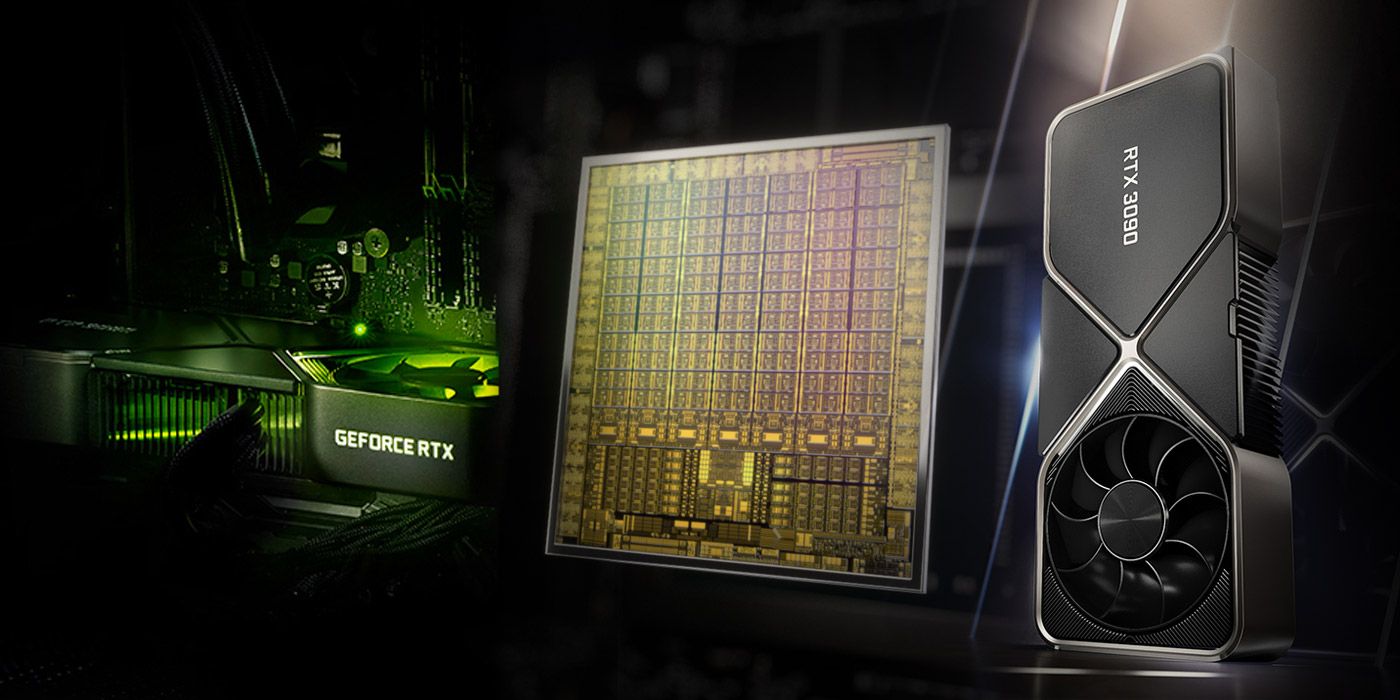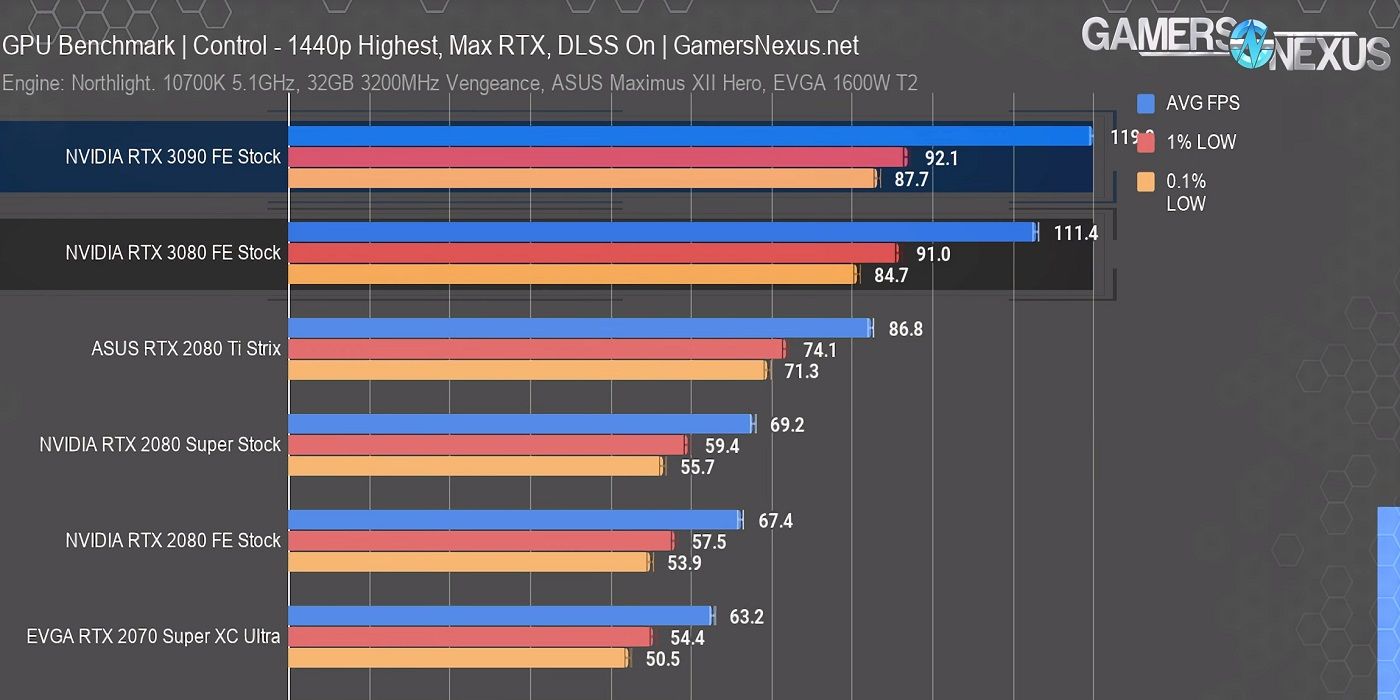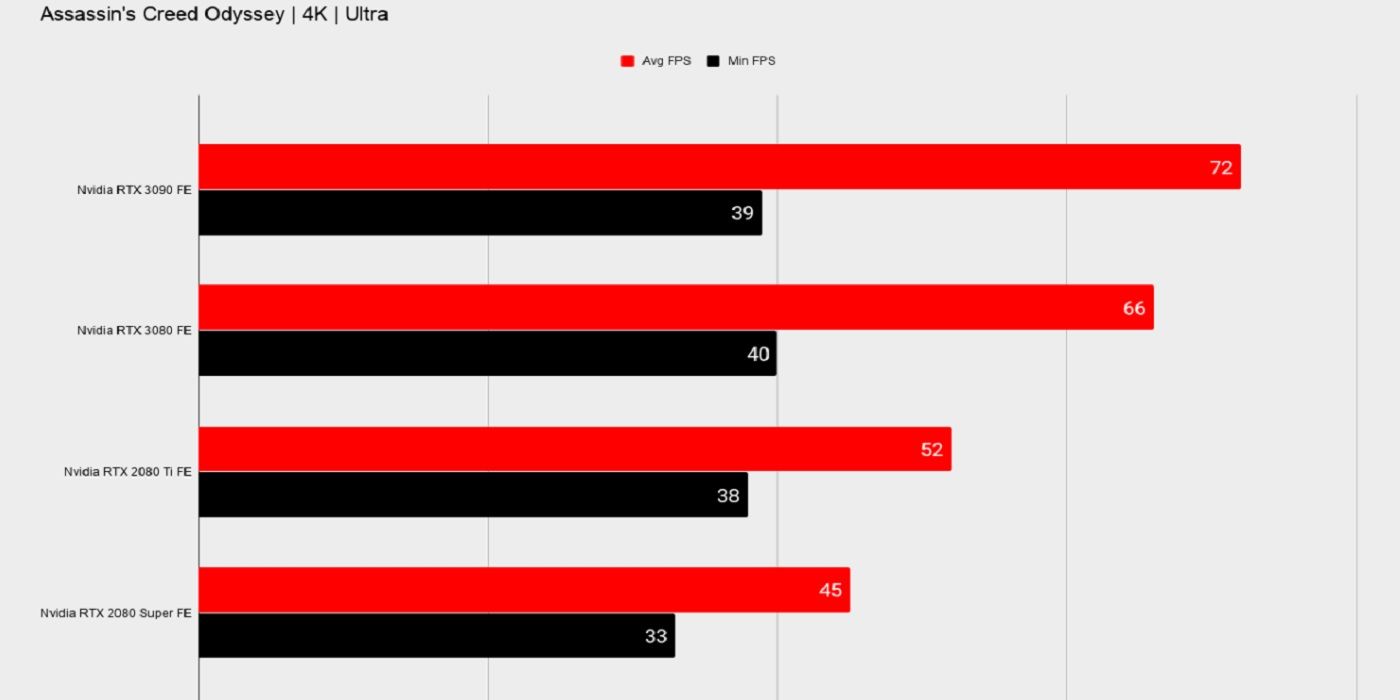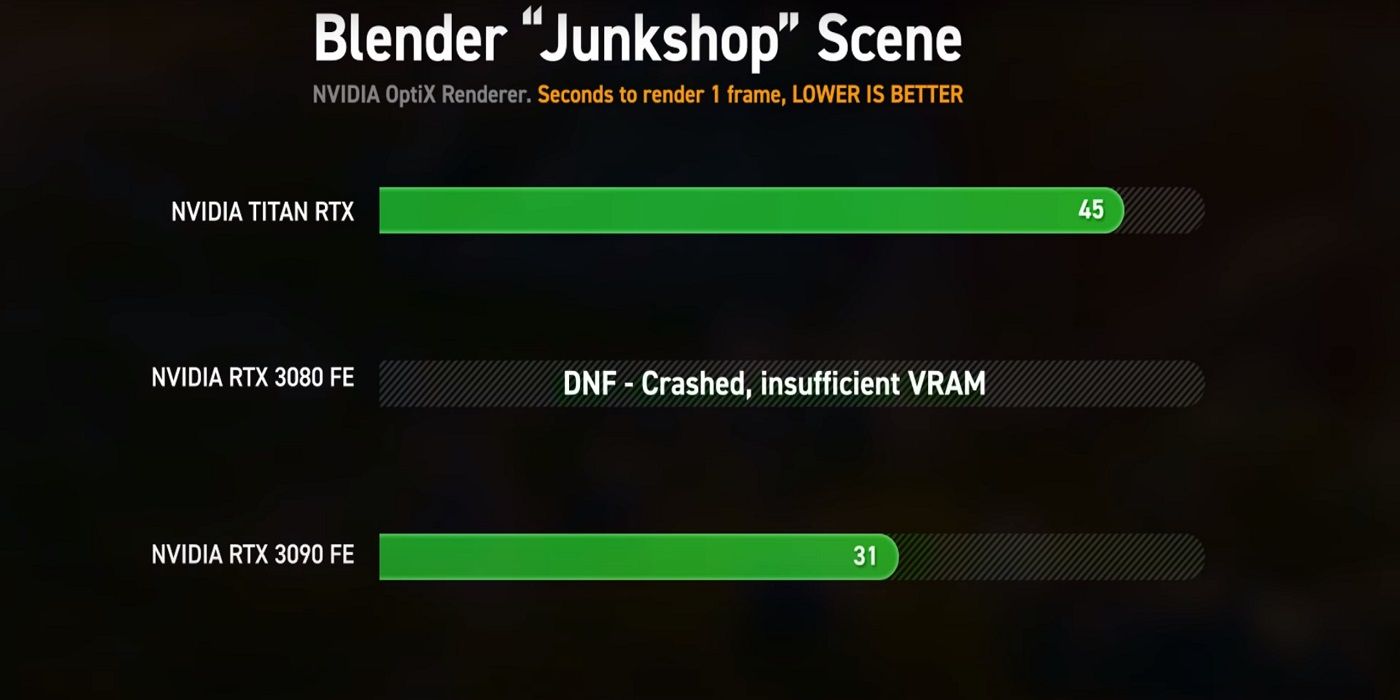The launch of Nvidia's new high-end graphics cards has caused immeasurable hype, and for good reason. The performance uplift seen in the new 3070, 3080, and 3090 cards is one of the largest generational leaps forward in the history of graphics tech, and that has implications beyond just PC gaming. These cards make practical ray tracing and AI upscaling far more affordable, meaning that these technologies will likely push game development forward across the board. Now that the new cards are in the hands of reviewers, its possible to see just what kind of improvement they offer.
The top-of-the-line 3090 was recently released for reviewers to play with, and its performance numbers paint an interesting picture of the massive GPU with specs that blow everything else out of the water. Nvidia promised that the 3080 would provide double the performance of the 2080, but testing of the 3080 by independent reviewers revealed that those stats aren't always accurate. That leaves the question- just what kind of performance does the $1,500 3090 offer over the $700 3080?
The 3090's specs are more hefty than any other card currently on the market, with 24GB of GDDR6X memory to the 3080's mere 10, among other impressive improvements. However, the 3090 is not being pushed by Nvidia as the flagship card; the 3080 is. This is because the 3090 is aimed at content creators and professional users, rather than gamers like the 3080. Its hefty price tag does not reflect gaming performance, it represents the card's value for creative workloads. That separation is shown clearly in reviewer benchmarks.
GamersNexus
GamersNexus started out with 8K gaming benchmarks, since that is one of the features that Nvidia touted the 3090's capabilities for. However, they discovered that true 8K gaming at 60FPS is still not quite possible even with a 3090. Most games fell closer to 30FPS at native 8K, with 60FPS only possible by rendering at lower resolutions and using DLSS to boost frames and resolution higher. It's still an impressive technology, but it still appears to be more of an advertising gimmick than anything else.
In Red Dead Redemption 2 at 4K and high graphics settings, a stock 3090 got 92.3 FPS to the 3080's 85.1. That's not a lot of performance per dollar, and the rest of the benchmarks repeated that pattern. To test ray-tracing performance, Control was tested at 1440P with max graphics. The 3090 managed 119.9 FPS while the 3080 did 111.4. For gamers who are willing to pay over double the price for a 10- to 15% uplift in performance, the 3090 is a viable choice. However, there is still more to the story.
PCGamer
In Assassin's Creed Odyssey at 4K Ultra, PCGamer's 3090 managed 72FPS while the 3080 got 66. In contrast, the 2080Ti, last generation's flagship, got a measly 52FPS. In Metro Exodus, another RTX heavy title, the 3090 did 81FPS to the 3080's 71 at 4K Ultra, a considerable uplift if price is left out of the equation. However, in Shadow of the Tomb Raider's 4K max graphics test, the 3090 only got 5 more FPS than the 3080, at 90 to 85. It would seem that the 3090's more than double RAM does very little for it in games over the 3080, but all those extra specs do in fact help in other areas.
In 3D modeling and animation, video rendering, or other creative workloads that rely heavily on RT cores, AI-boosting Tensor cores, and lots of graphic memory, the 3090 is actually able to stretch its legs and significantly outperform the 3080. More testing in creative apps revealed that the 3090 is consistently the better choice. That doesn't matter to gamers, but that is exactly why Nvidia didn't push the 3090 as its flagship. It just isn't practical for even the most hardcore gaming enthusiasts.
JayzTwoCents
JayzTwoCents did a variety of game testing with the 3090, 3080, and TITAN RTX, but found some particularly interesting details when testing creative workloads. Starting with the game benchmarks, Control at 1440P with high graphics and all ray tracing on saw 76 FPS with the 3090, 68 with the 3080, and 51 with the TITAN RTX. Shadow of the Tomb Raider at 4K with max settings got 66 on the 3090, 57 on the 3080, and 44 for the TITAN. Those numbers fall in line with other testers, but then they started an extensive battery of rendering tests.
In 3D rendering, the graphics cards' RAM was key. In the Blender "Classroom" render, the 3090 completed the task in just 36 seconds to the 3080's 48 seconds, but in renders that require more RAM, like the "Junkshop" scene, the 3080 outright crashed before finishing. The TITAN RTX finished in 166 seconds, while the 3090 finished in 80. This clearly shows that the 3090 is meant to replace the TITAN cards and make creative performance more accessible, not just boost gaming numbers a few extra percentage points.
When the 3090 is considered as a TITAN replacement, it becomes a much more viable option. It is roughly $1,000 less than the TITAN, bringing high-end data processing and rendering to far more people. For gaming, there may be some people willing to shell out $1,500 just to have the best of the best, but Nvidia's marketing may have been a bit misleading when they pushed the 3090's 8K gaming performance rather than its intended use-cases. As more cards are released, including a rumored 3080 with more RAM, the 3090 may become even more of a hard sell for anyone other than content-creation professionals.




